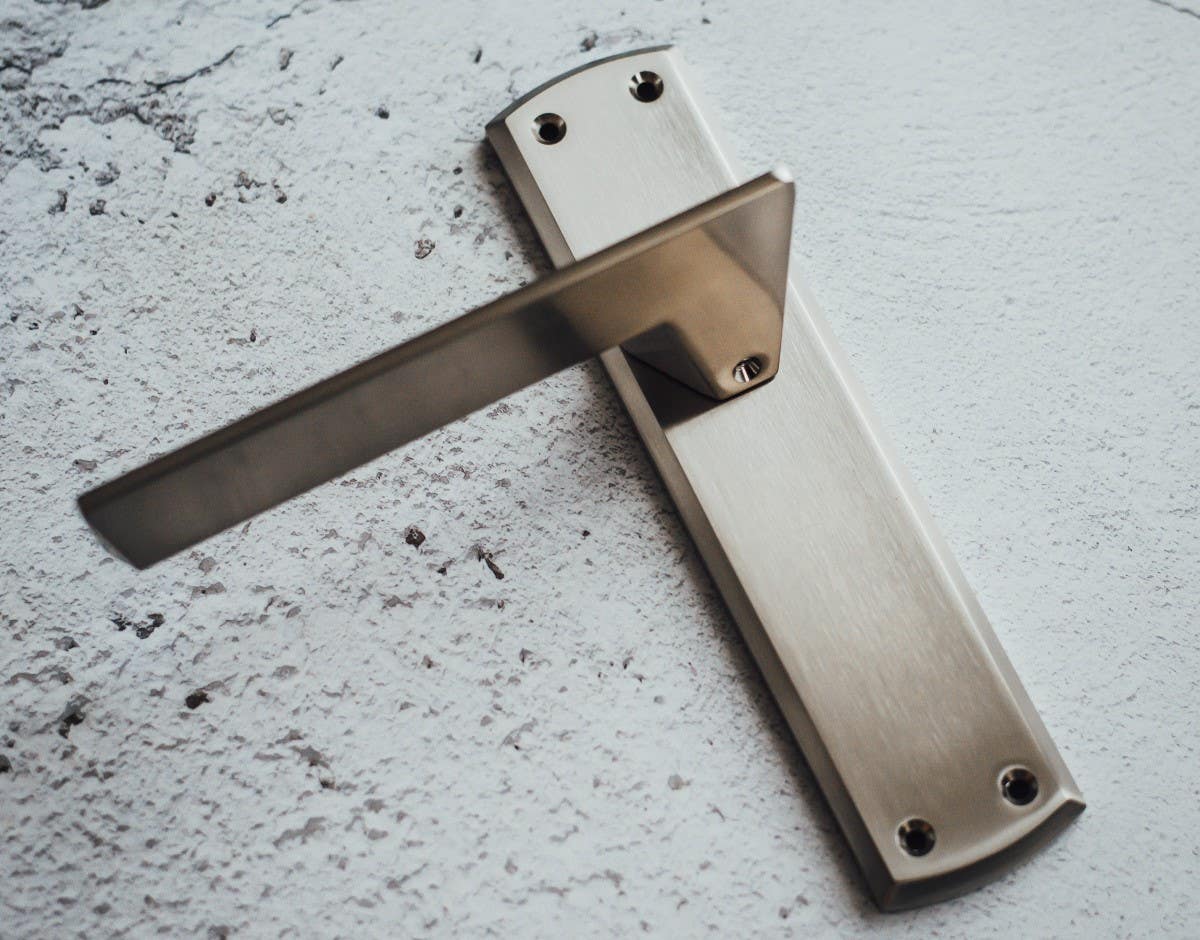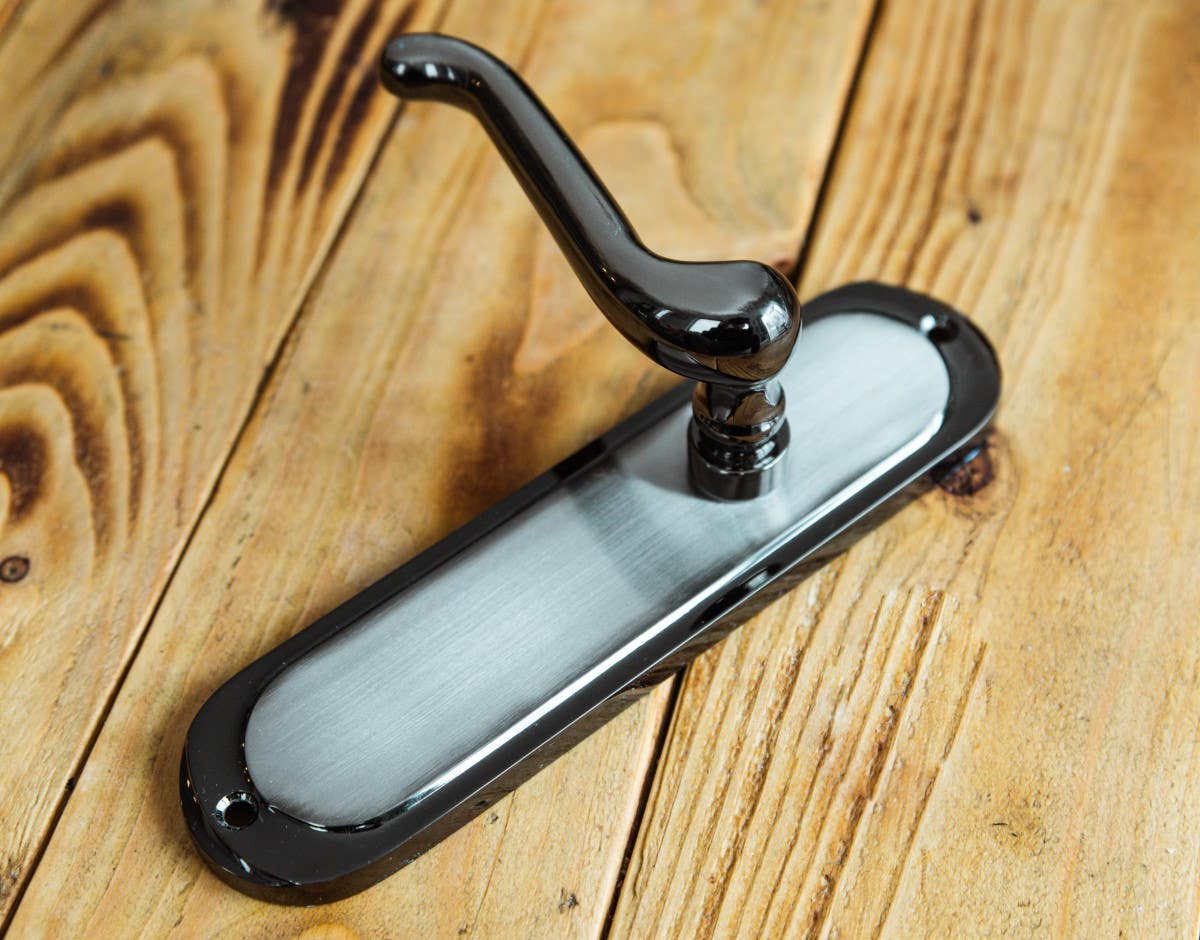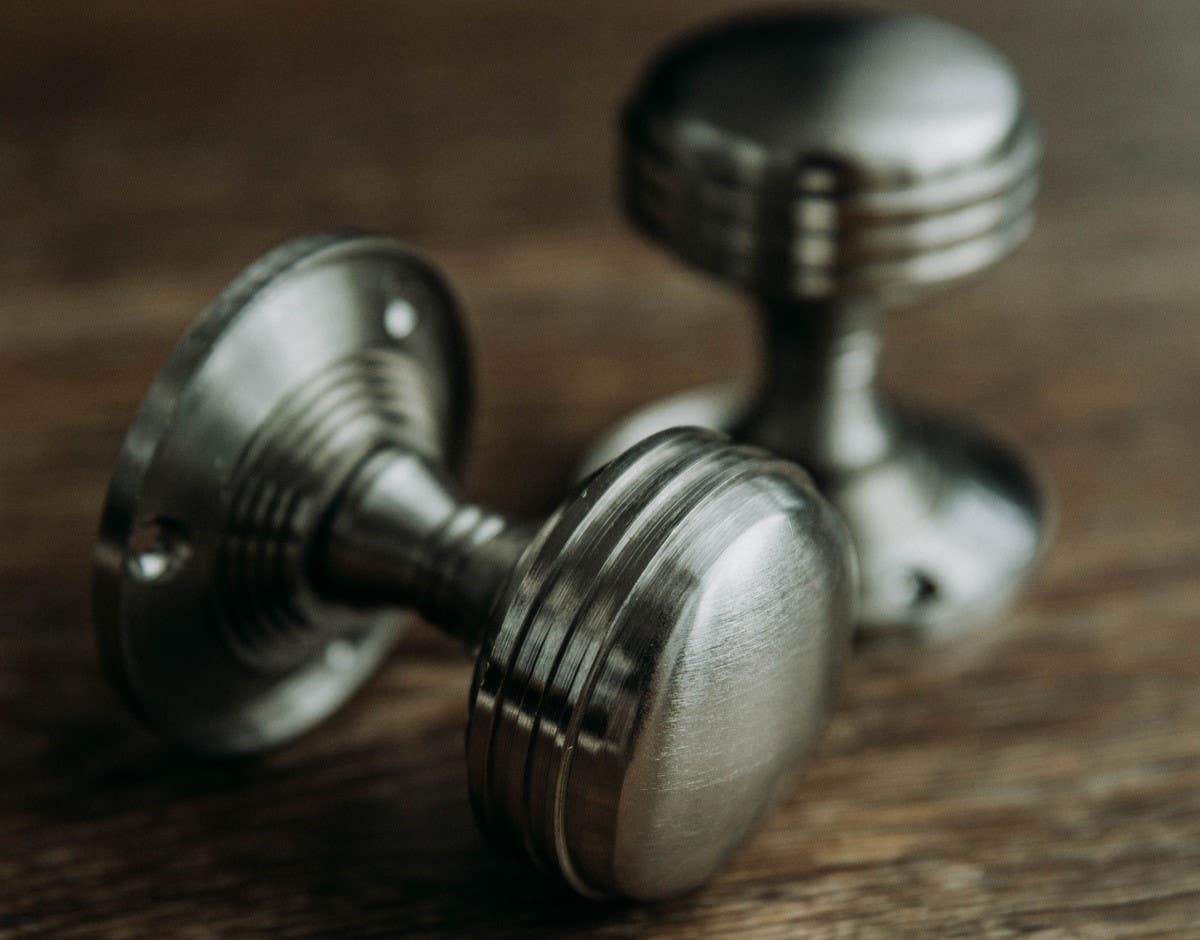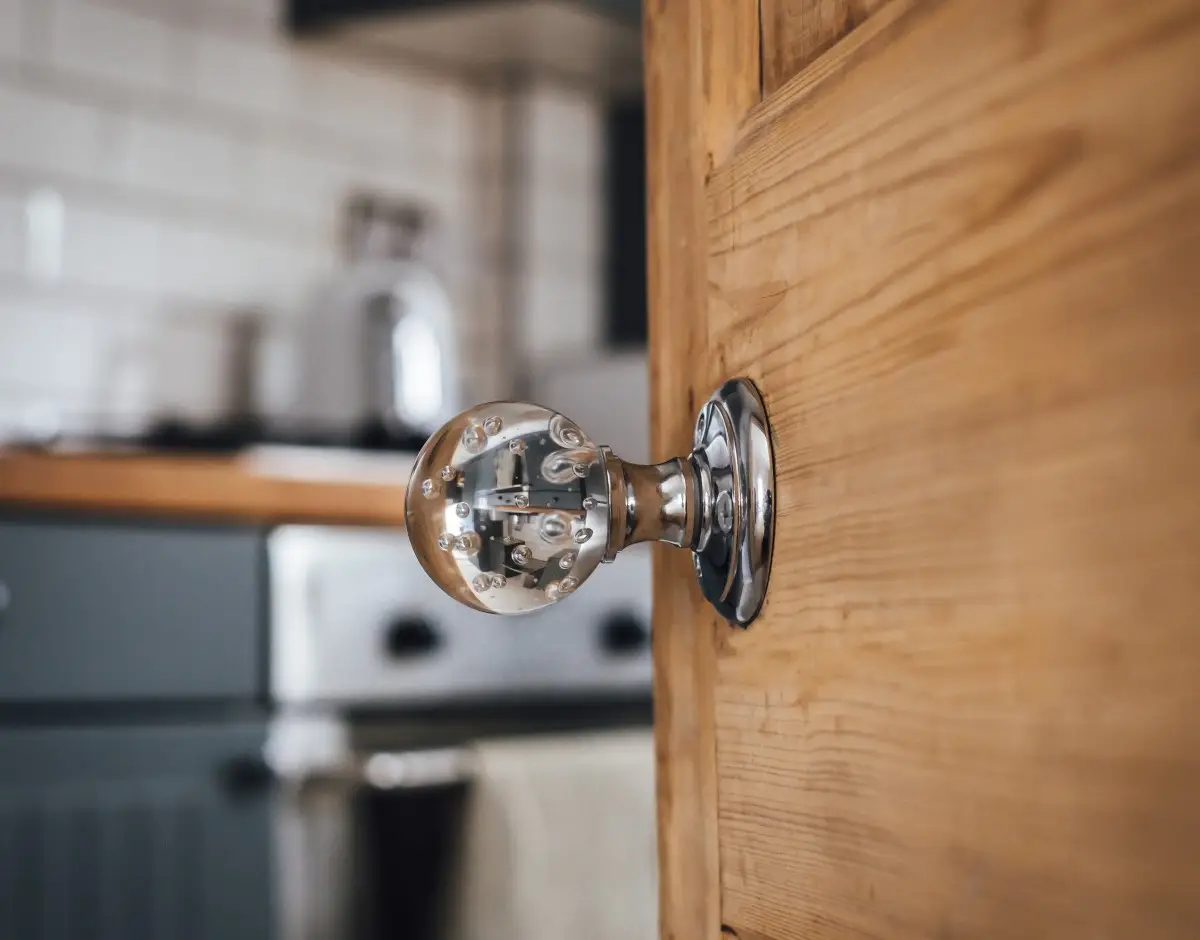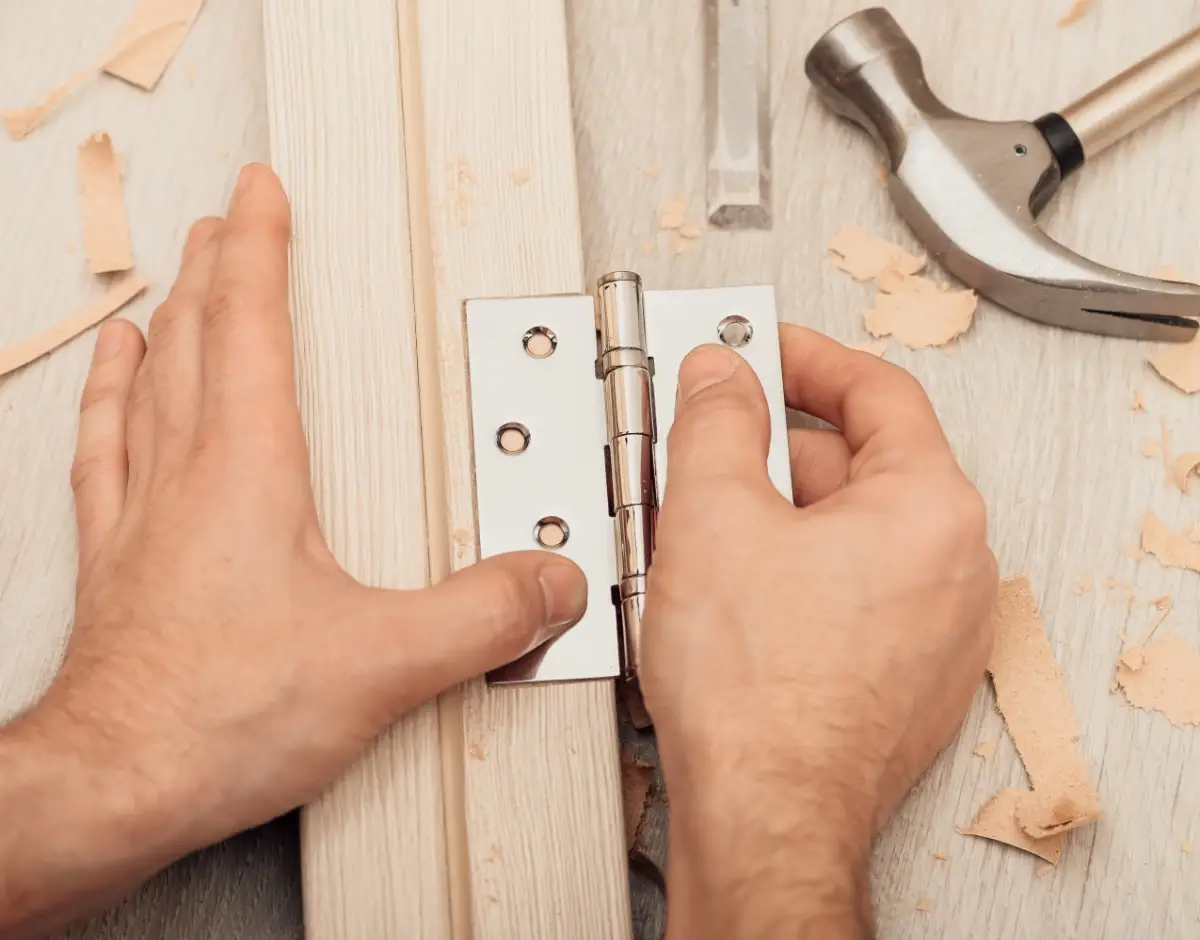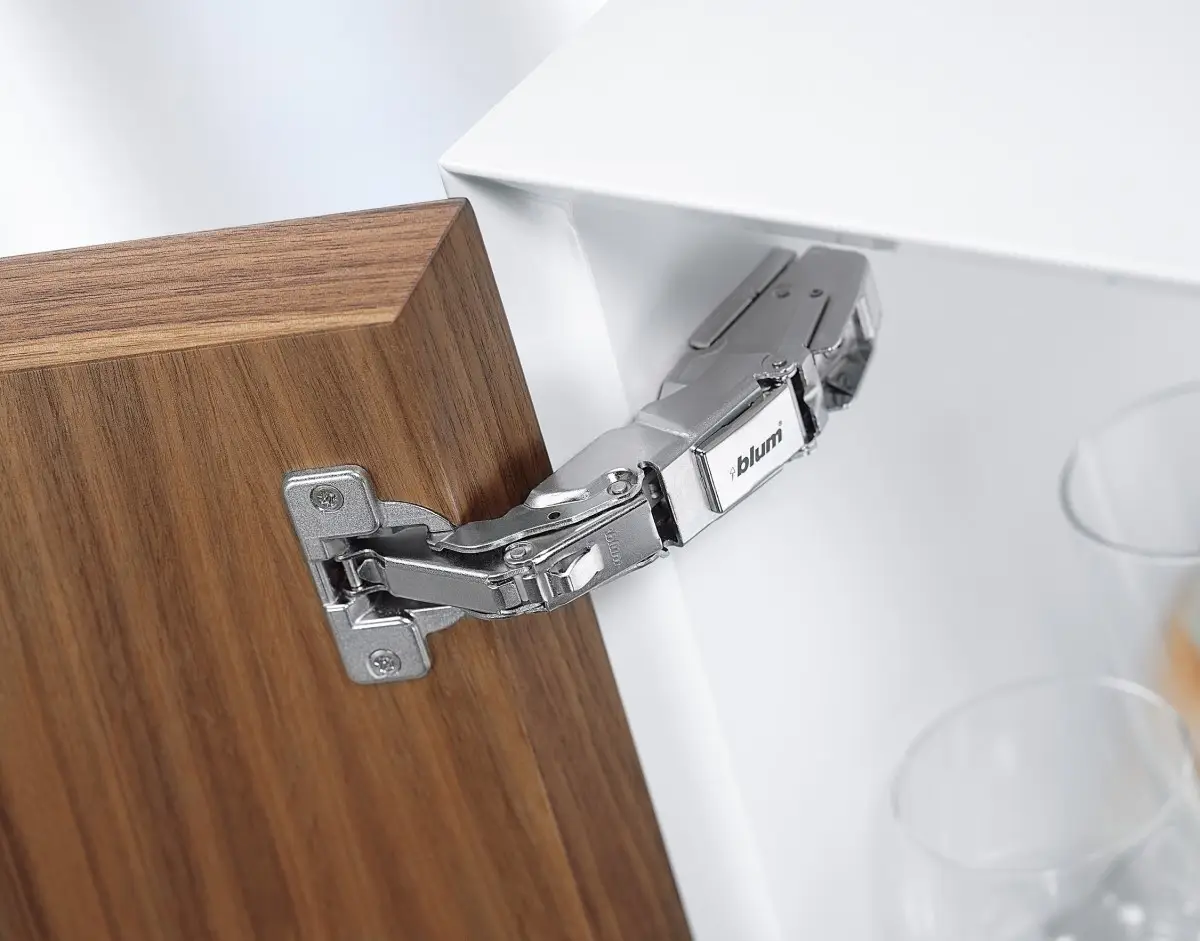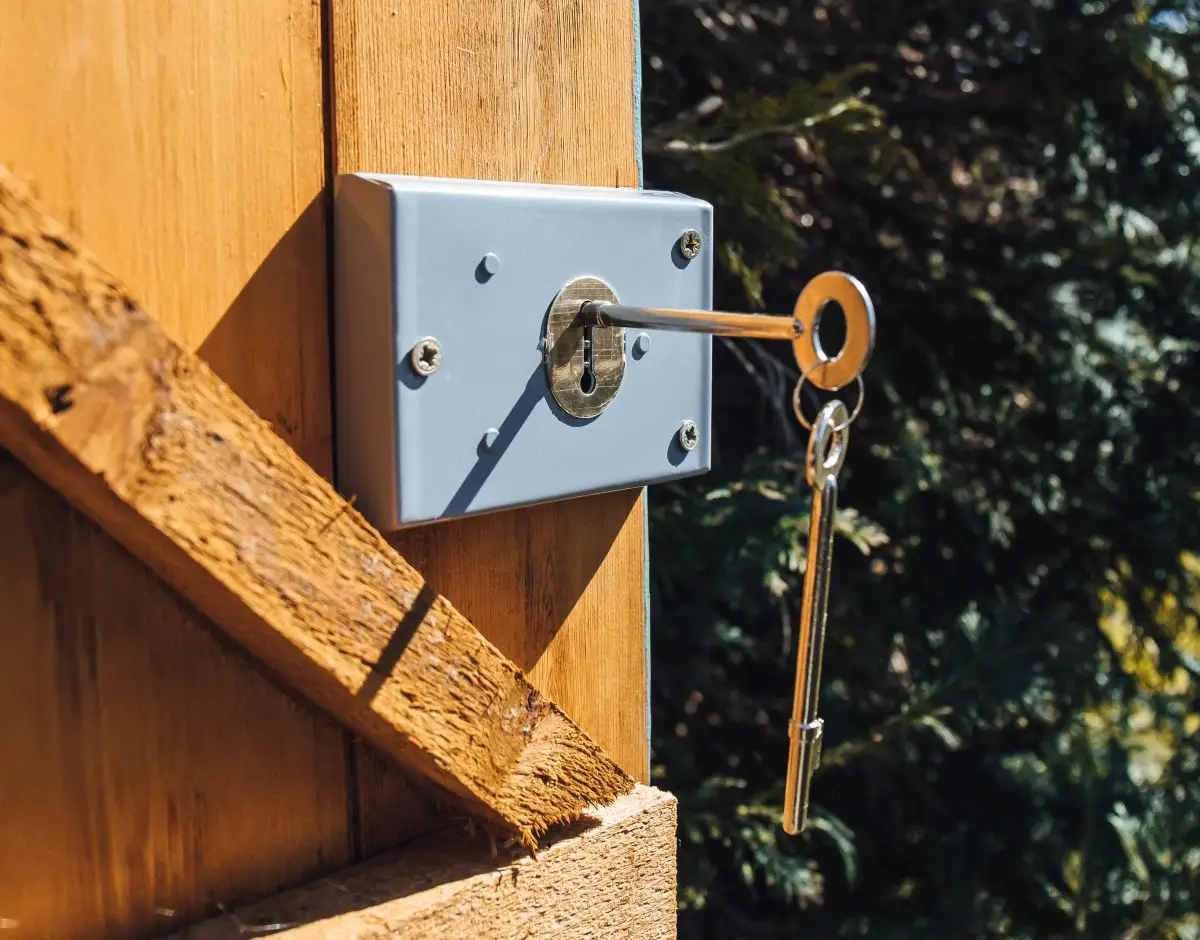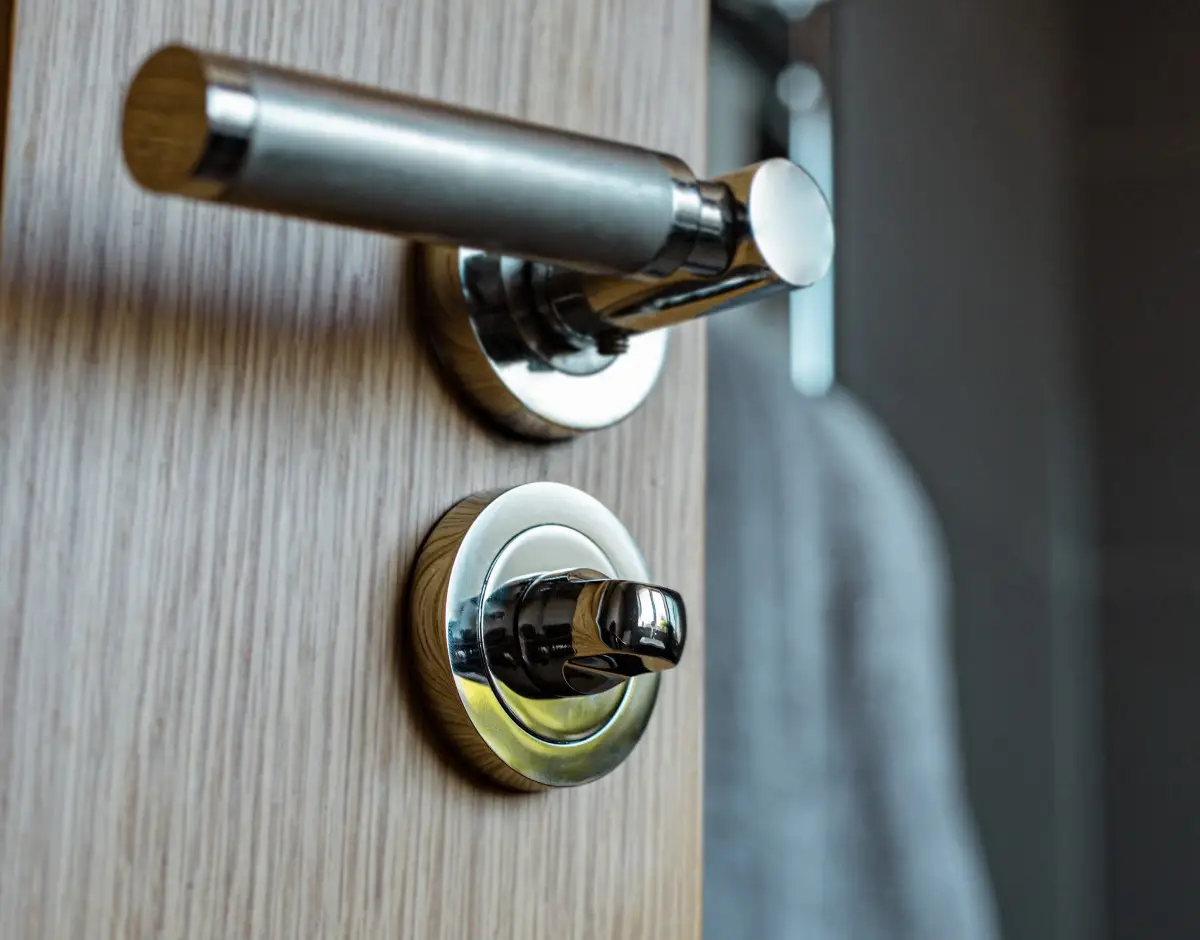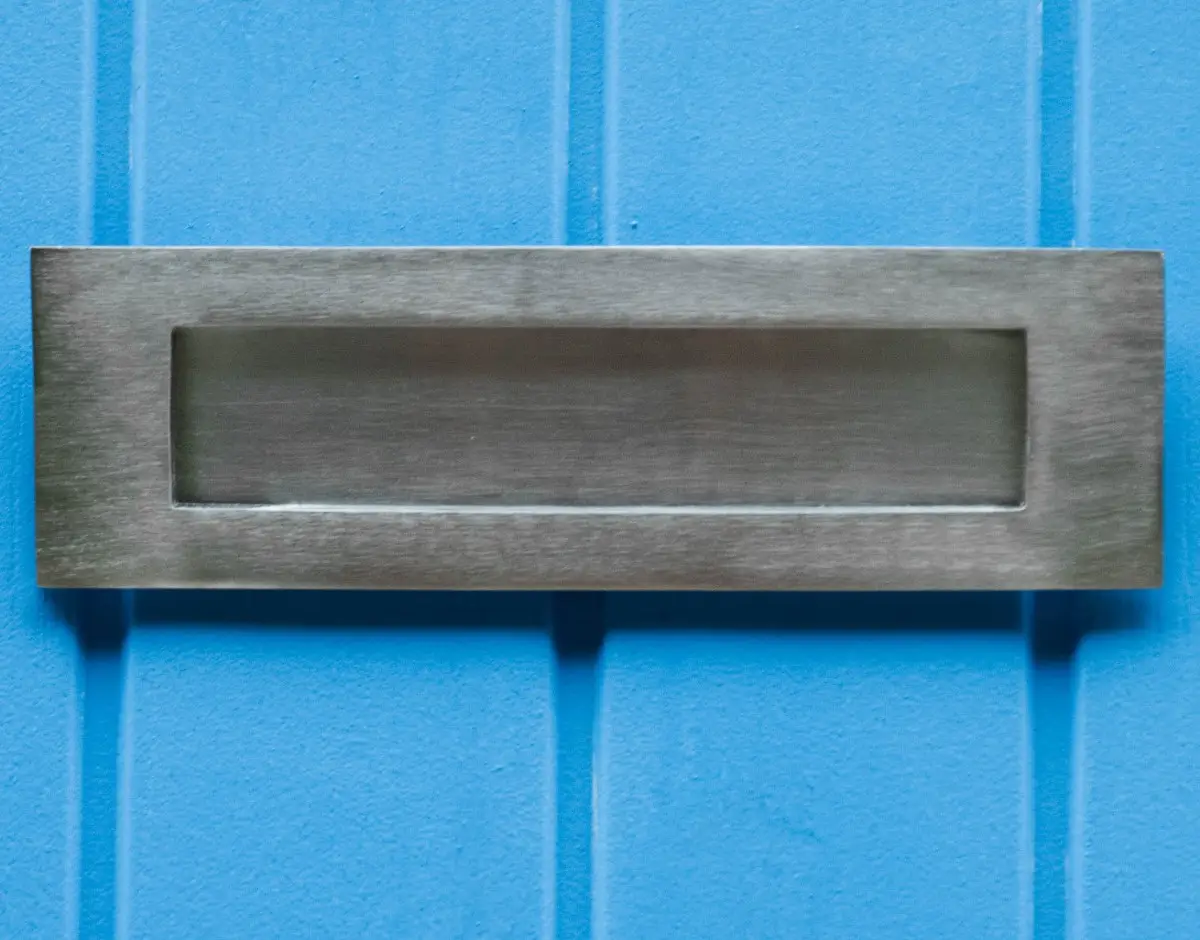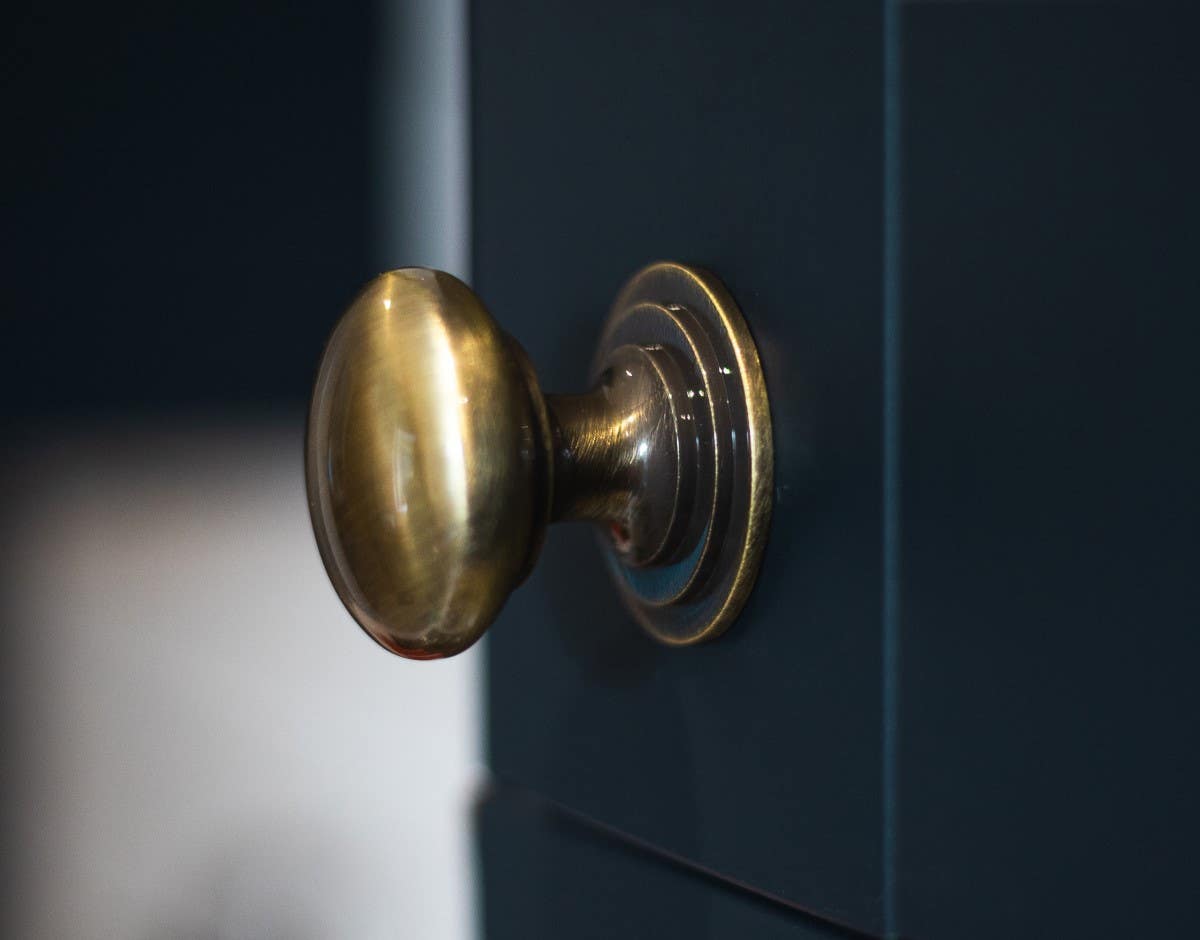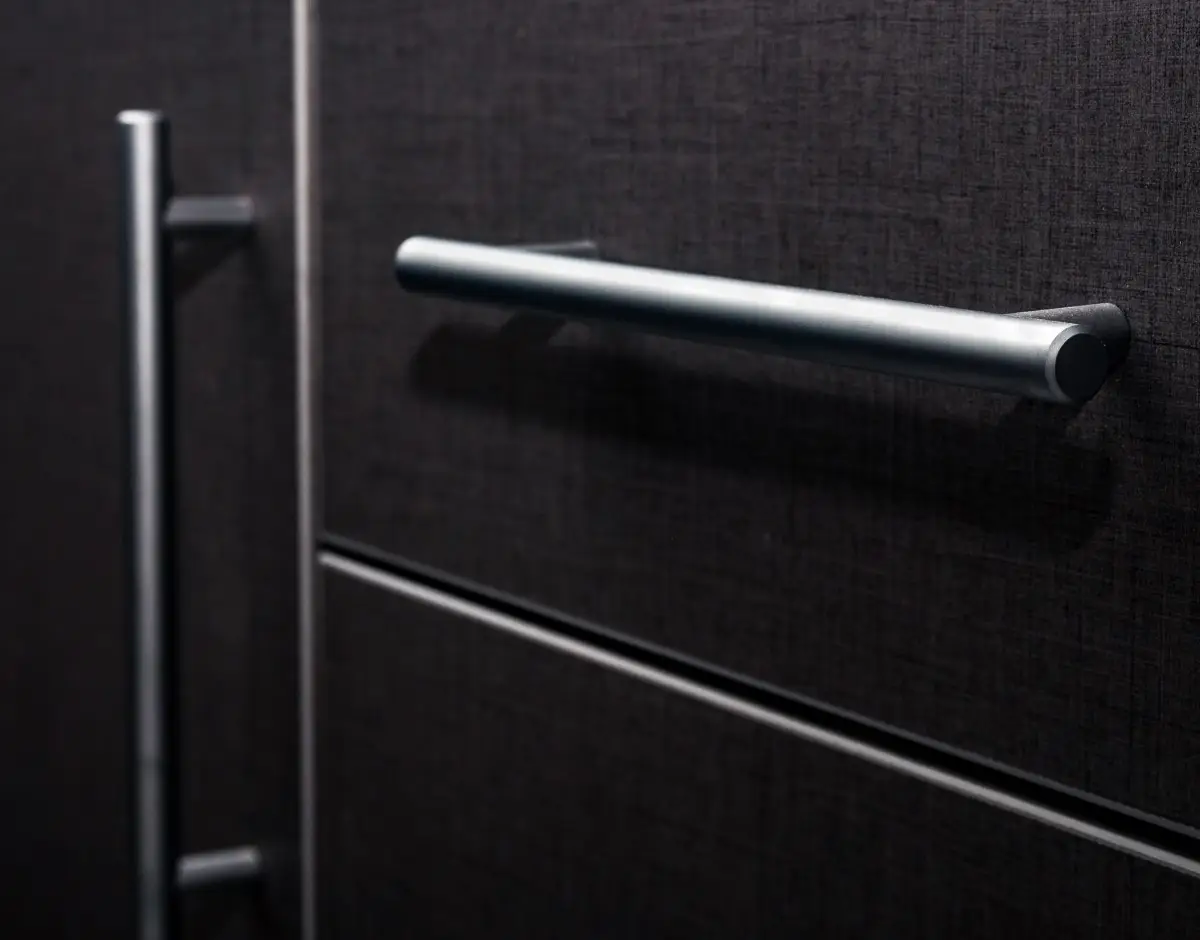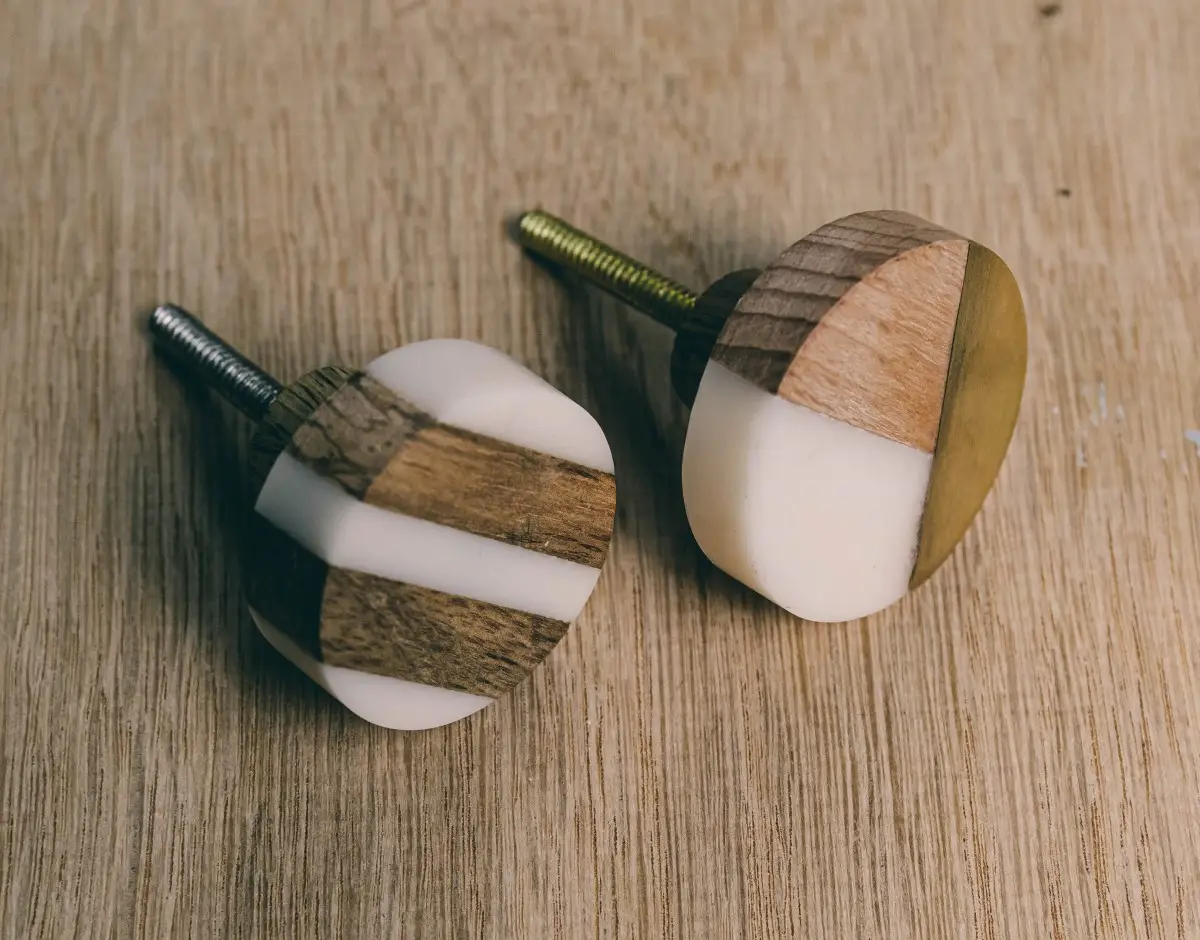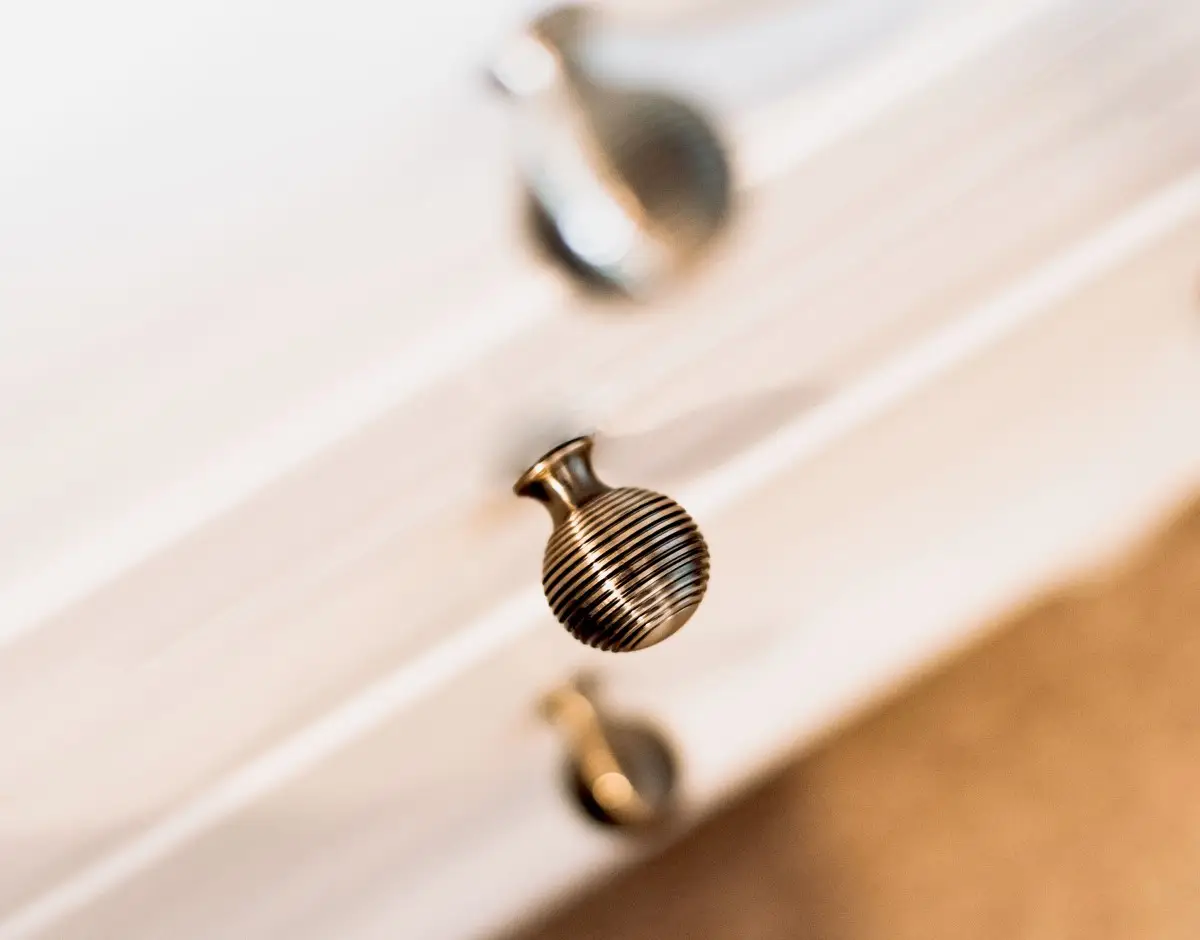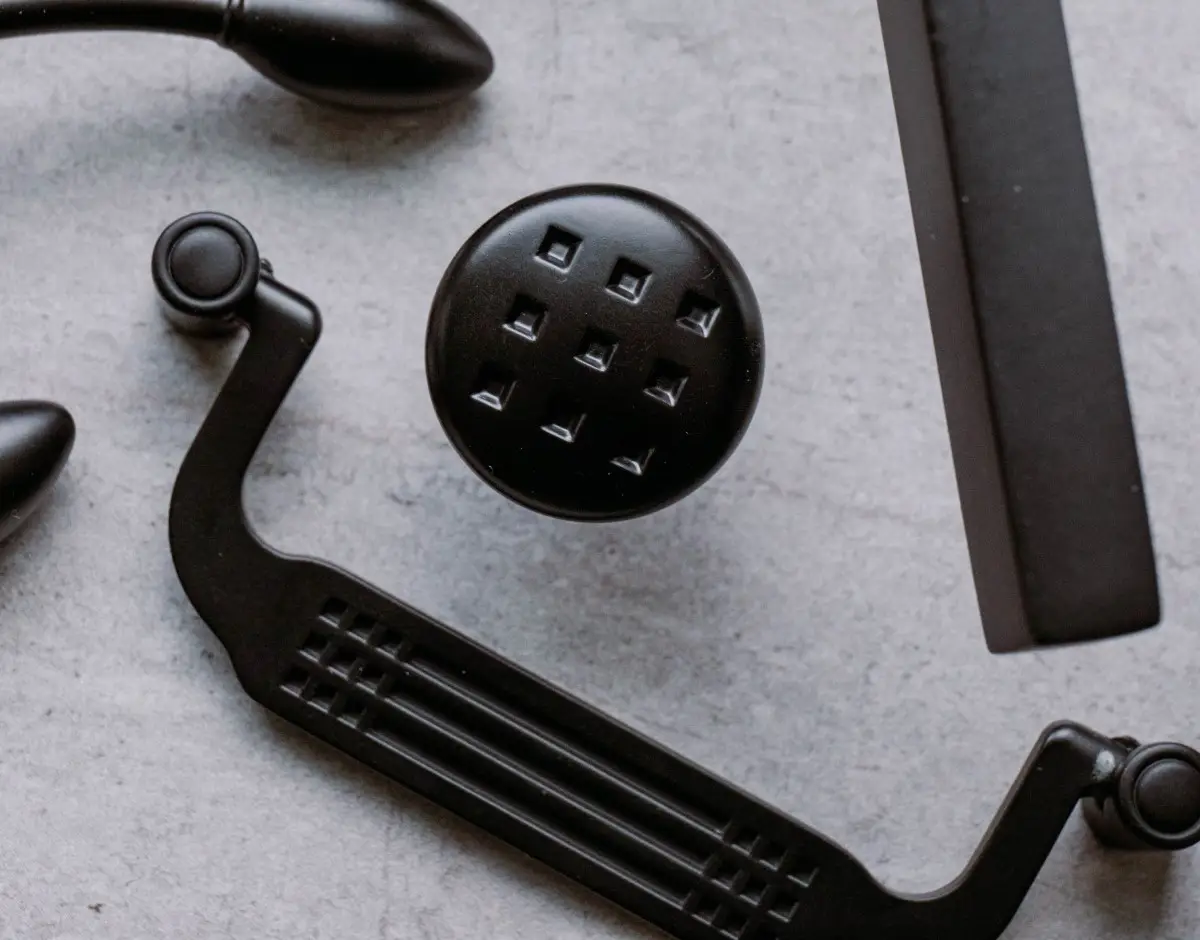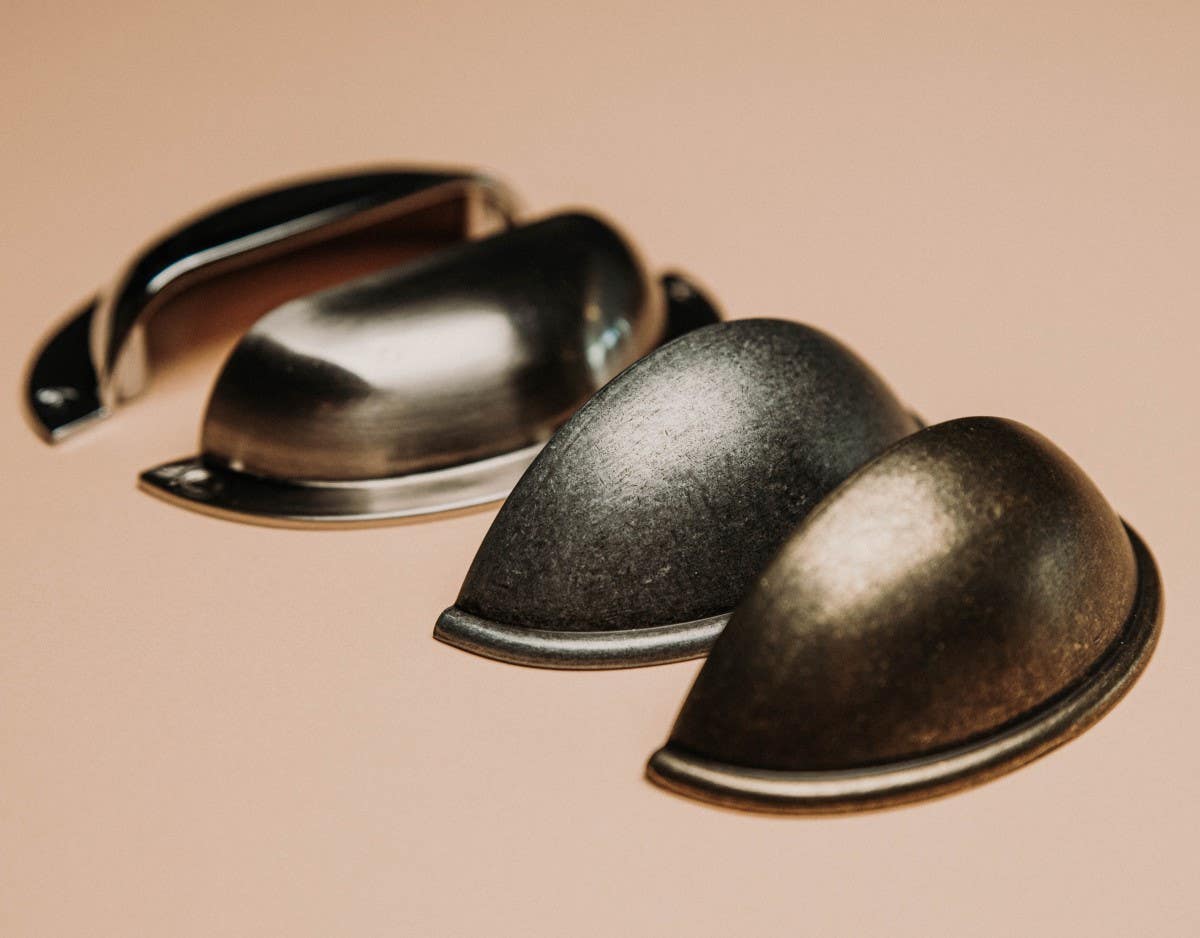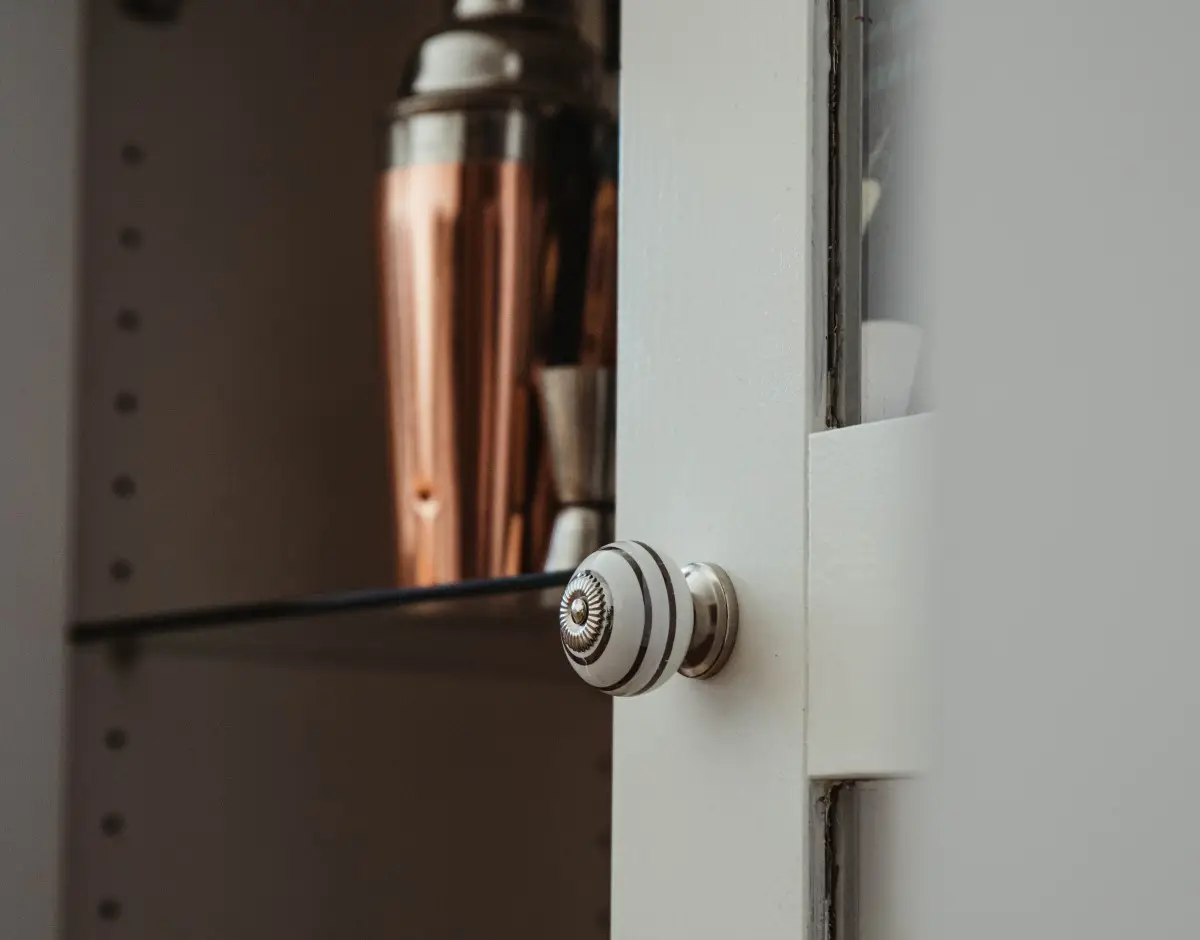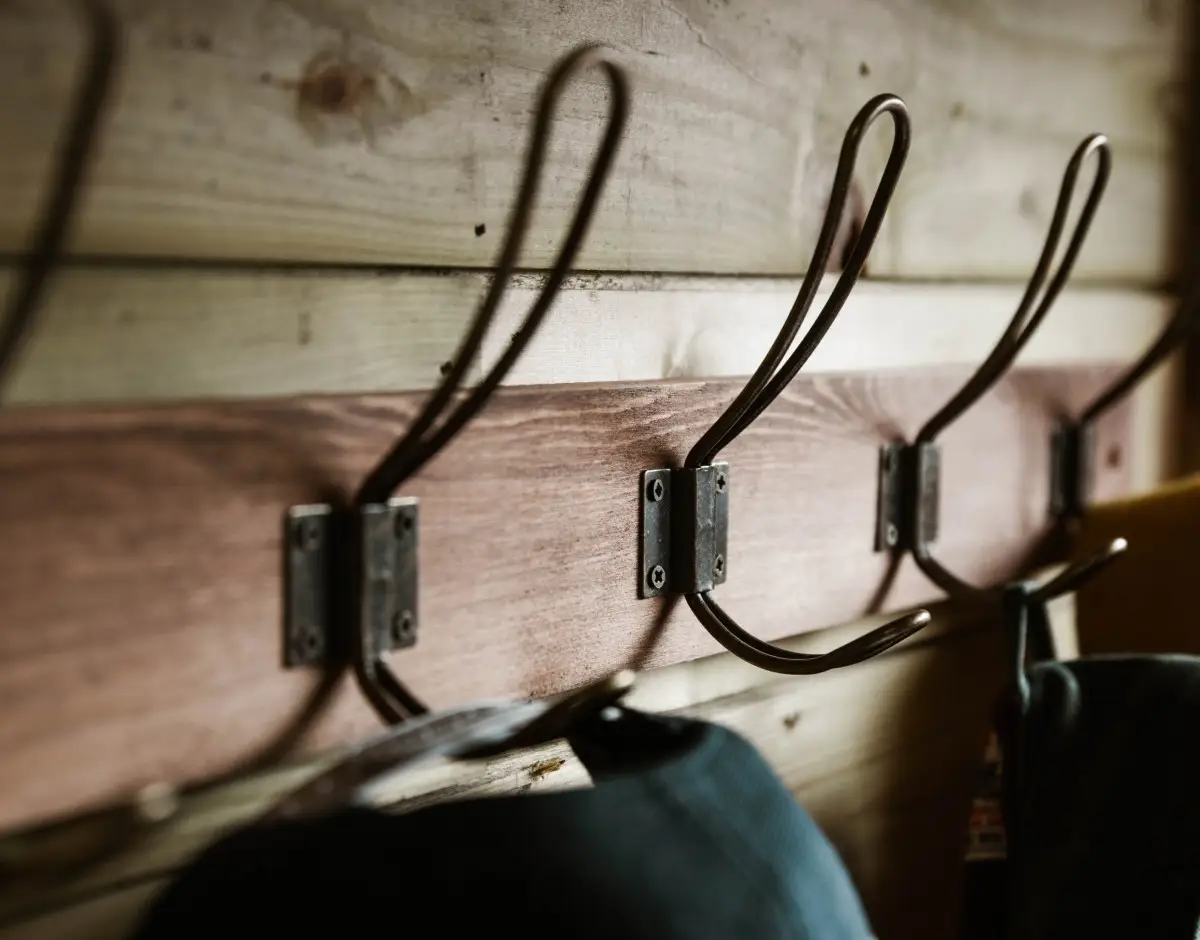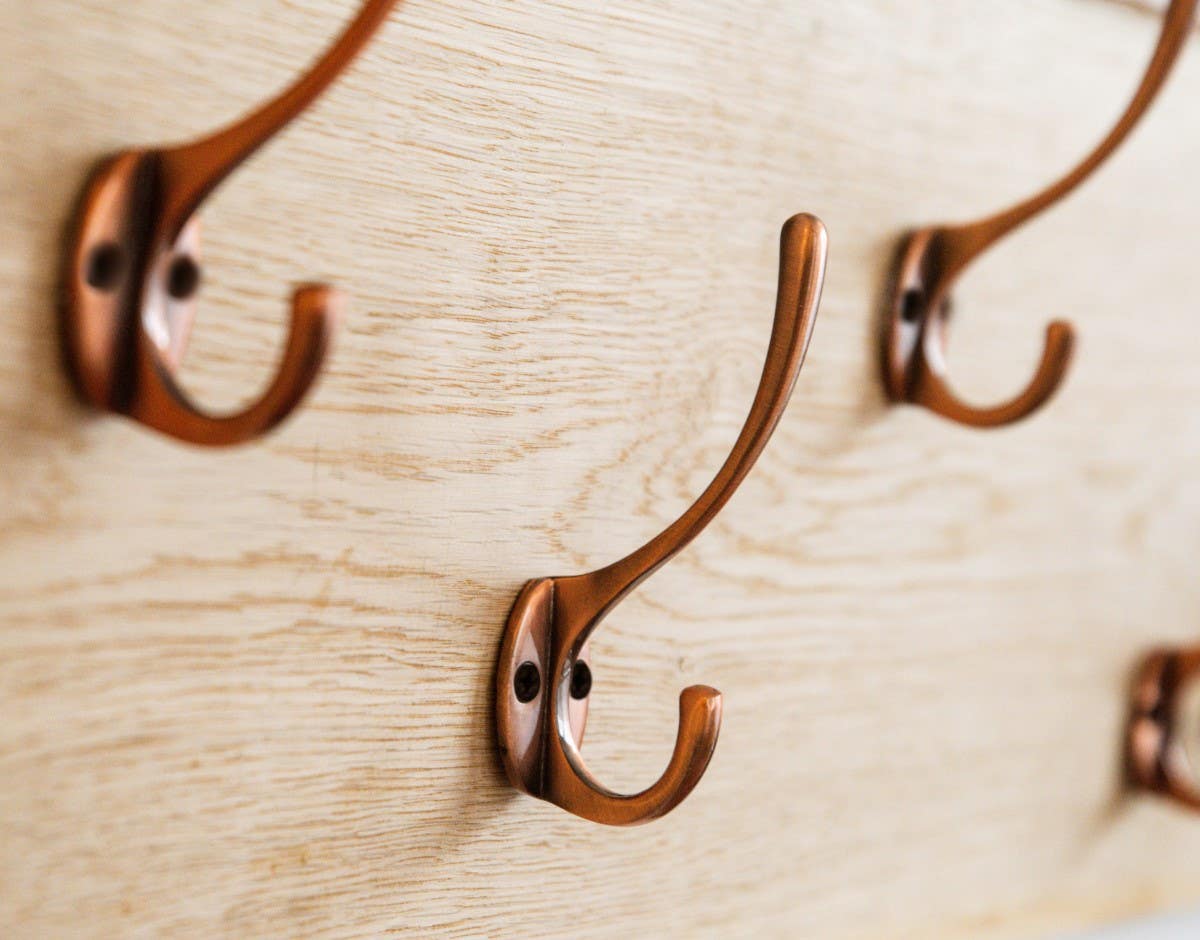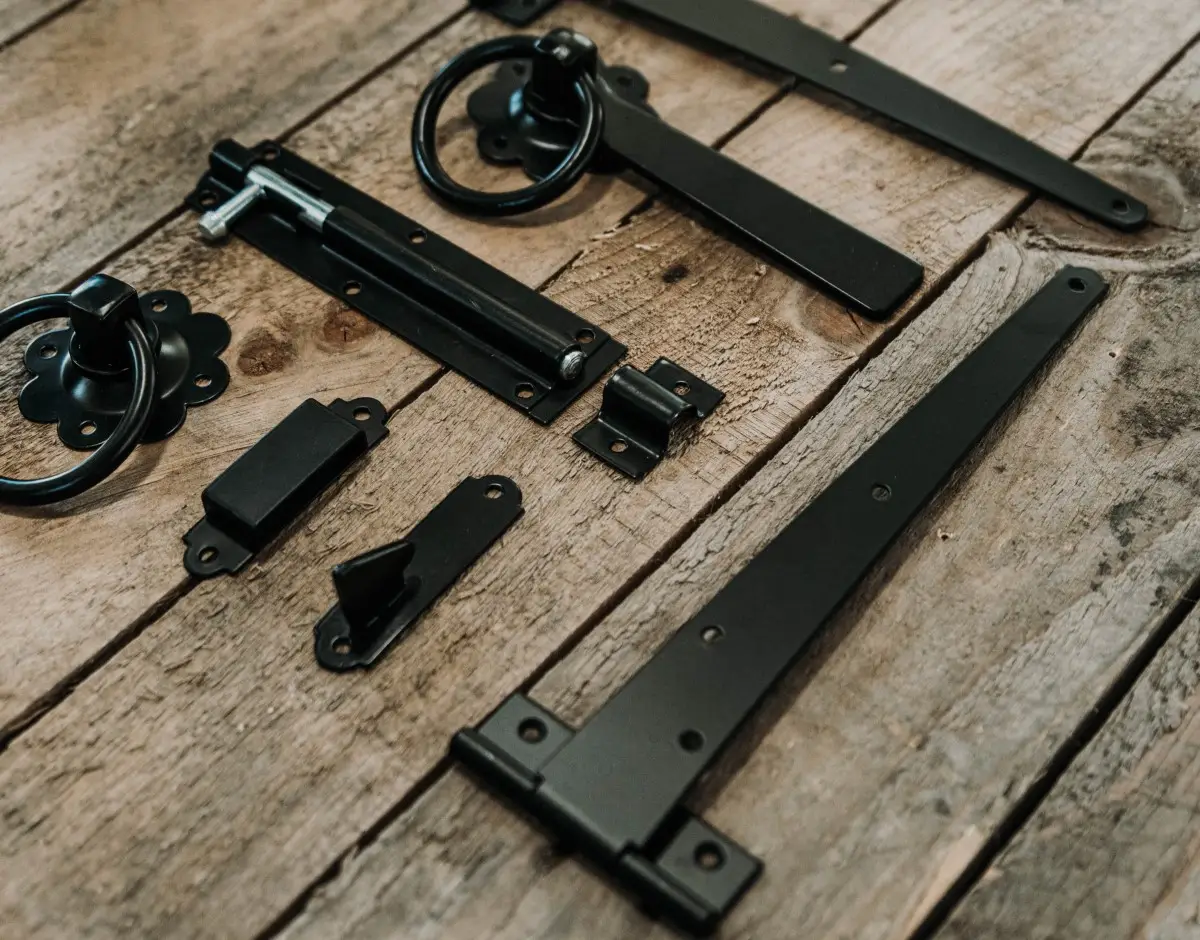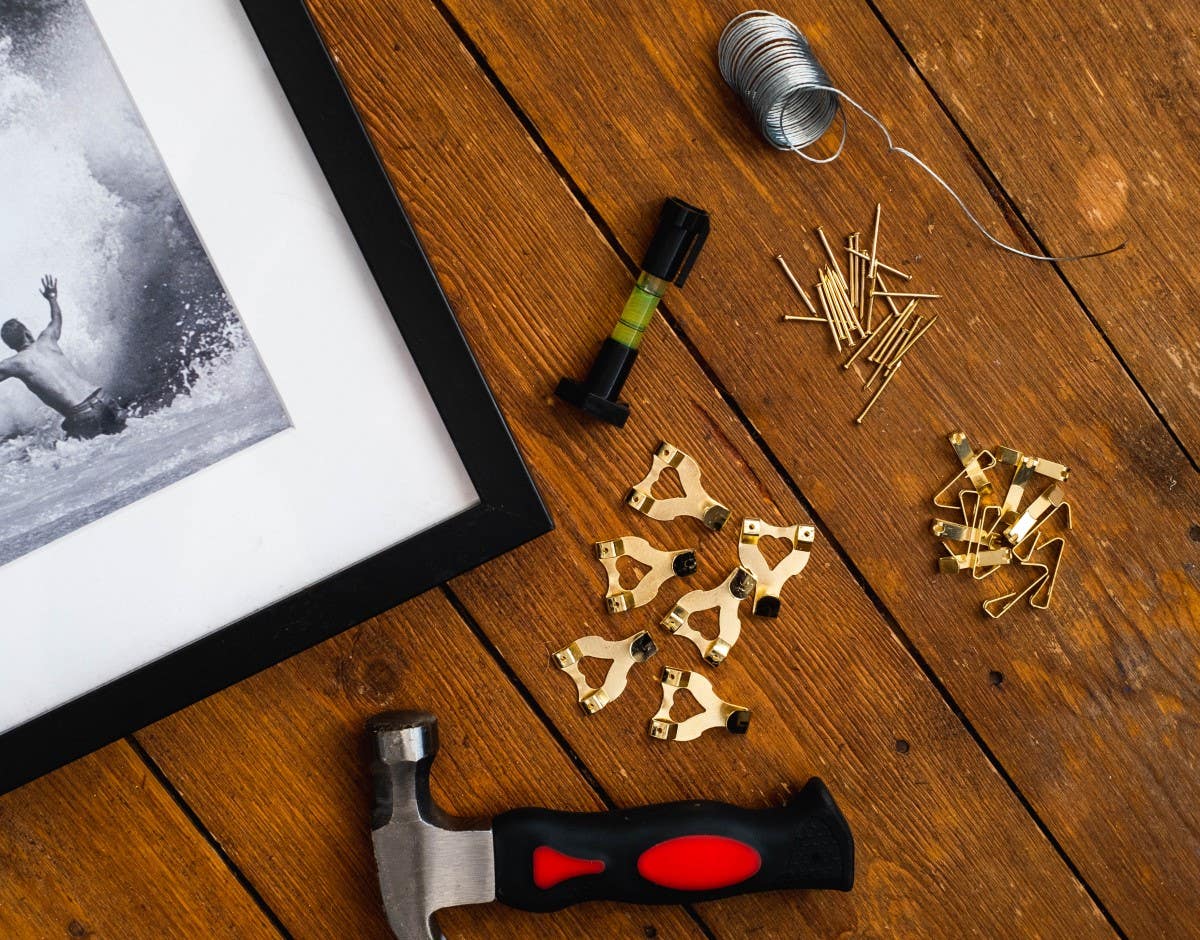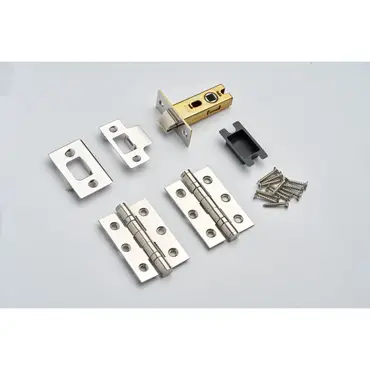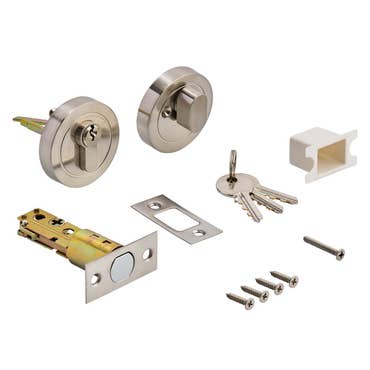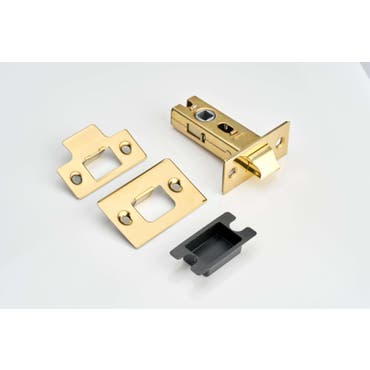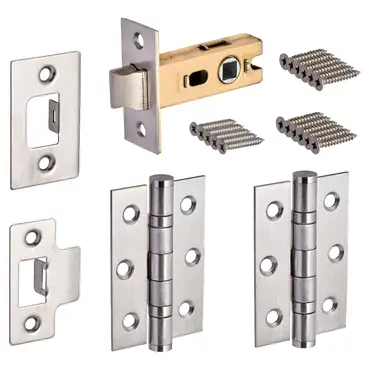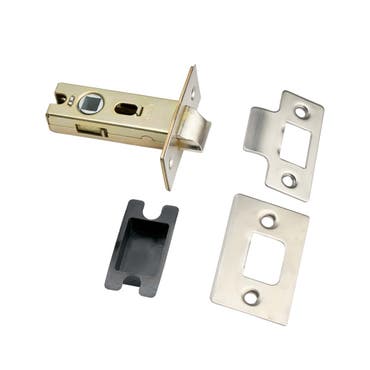When looking online for more information about door locks and which one to choose, you'll quickly encounter the door latch. In this blog, we take a closer look at this variety of door ironmongery, how it works and how to go about measuring a door latch accurately.
Often referred to as tubular latches, door latches are usually morticed, which means that a door knob or door handle is used to open and close them. Typically, a door latch will have an integrated spring mechanism that pulls the door knob or handle back to its original position after use.

While it might seem like a minor component at first glance, it's vital to understand how they operate, so let's look more closely now.
WHAT IS A DOOR LATCH?
On a basic level, a door latch is something that allows a door to be held closed and secure, as well as opened when required.
Browse the market and you'll find a variety available that include the aforementioned tubular latch, night latch, and flat (upright) latch.
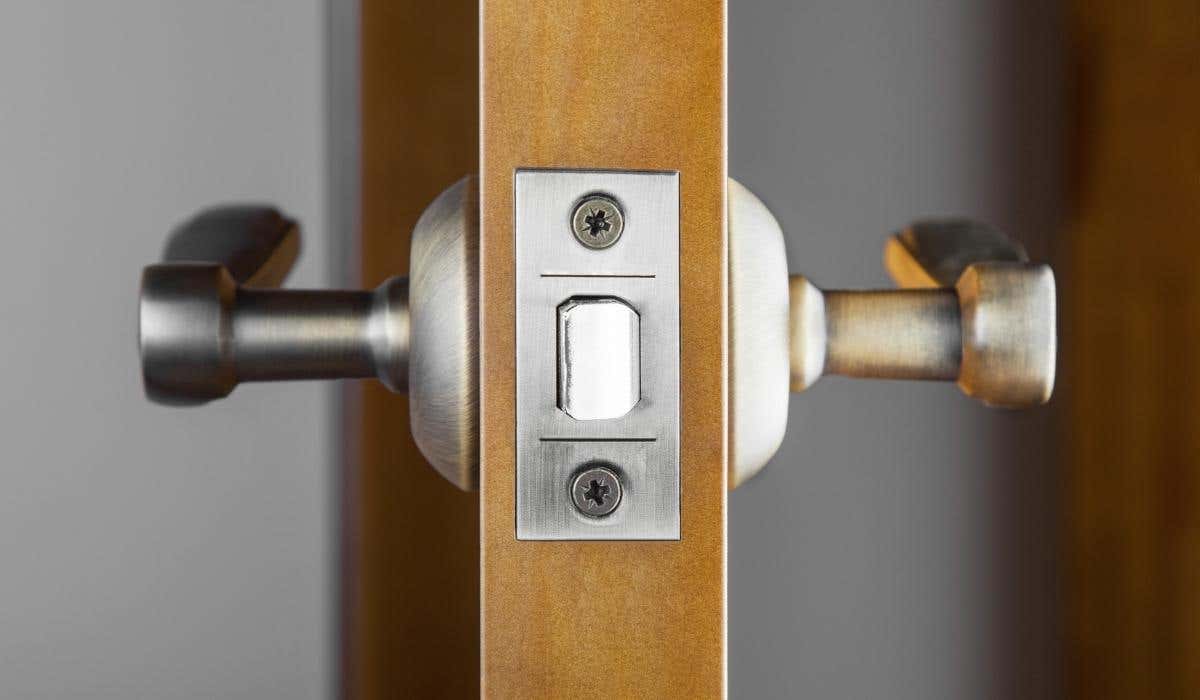
WHAT FEATURES DOES A DOOR LATCH HAVE?
Look at pretty much any of the internal doors in your immediate locale and you'll find a door latch holding it closed. The mechanism itself will feature a rectangular tube that can be configured in a couple of ways.
The simplest form you'll come across is the latch bolt (tongue) that has a sprung follower that retracts when opened and springs back when let go.
ARE DOOR LATCHES EASY TO FIT?
Yes, they are simple to install, due largely to their basic design. Often, all that's needed to fit them is just one spindle hole drilled. This results in the installer being able to avoid the complex jig or chisel work that tricker types of mortice latches call for.
As a result of these benefits, the tubular latch is one of the most widely used by DIY-ers and tradesmen. The fact that tubular latches are available in such a broad range of shapes and sizes only adds to this popularity.
A WIDE SELECTION OF AVAILABLE OPTIONS
Despite being central to how smoothly a door opens, the latch is an often overlooked door furniture component. The fact is that door latches come in a staggering array of styles and finishes that can be matched perfectly to the door handle and door frame.
Also, there are variations in quality, meaning that a decision needs to be made between economy, double-sprung, or heavy sprung.
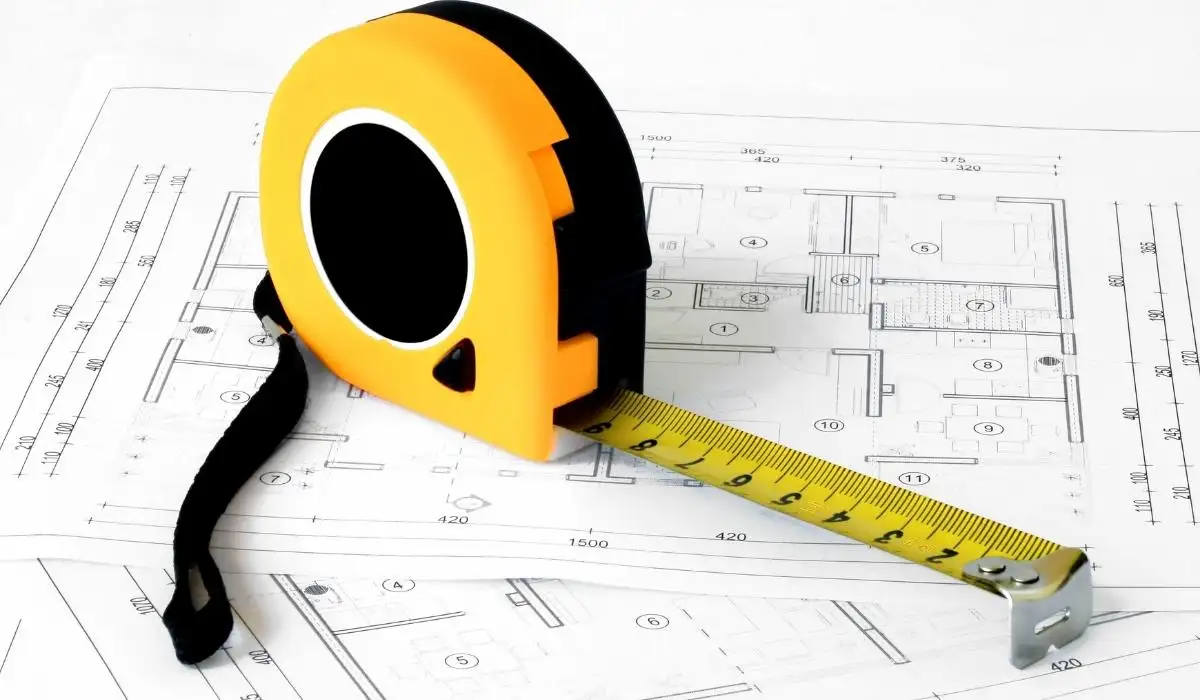
HOW DO YOU MEASURE A DOOR LATCH?
Ok, so here we get to the main thrust of the article - how to go about measuring a door latch, and the very first task before you do anything else is to choose the type of door handles you want, as it matters to what comes next.
If you were to go for an often-chosen product like lever door handles, you're most probably going to need a 76 mm door latch - that's regardless of whether a lever-on-backplate or lever-on-rose is chosen.
As door lock experts, our advice is to get a 76 mm latch for rose door handles and a 64 mm latch for door handles on a back plate.
AVOID KNUCKLES BANGING THE DOOR FRAME
Another crucial measurement that needs to be determined is the backset, which is basically the distance from the latch spindle hole to the edge of the door.
Generally speaking, a latch with a 64 mm case measurement will have a 45 mm backset, whereas a 76 mm case will have a backset measurement of 57 mm.
This is an important measurement to get correct, as failing to do so will end up with the user's knuckles getting sore after banging against the door frame.
This is an area in which the type of door handle chosen will have a bearing, as a lever handle, for example, would need to be slightly offset for everything to match up properly.
ADDRESSING COMMON MISCONCEPTIONS
When installing this kind of door furniture, it's common for tradesmen to select 64 mm door latches, but in our opinion, a better aesthetic is achieved when the 76 mm variety is chosen.
That's because when a backset of 57 mm is selected, lever handles and door knobs can be positioned in the centre of the door stile.
The sole occasion on which this wouldn't apply is when the door in question has glassed panels or is too narrow.
IS THE BACKSET AND CASE SIZE THE SAME THING?
Actually, no. Often people get mistaken between these two measurements when installing door latches, thinking they're interchangeable. They're not.
In reality, case depth measurements are frequently described as being the same as the lock size, but it's only partly accurate, as only 9 out of every 10 locks will follow this rule.
The knock-on effect of this is that certain measurements can be worked out when the case depth is known. There are many different sizes, but as we've already mentioned, the most common are 64mm and 76mm (2.5" & 3" when using imperial measurements).
However, the backset measurement refers to the distance between the leading edge of the door latch and the keyhole's centre.
When installing a door latch, this is a crucial thing to understand, it prevents you from having to drill any extra holes unnecessarily.
MEASURING THE STILE IS ANOTHER WAY TO CHECK

If you're having issues deciding between the different door latch sizes, there is a quick and easy way to be 100% certain.
It's a pretty simple step that just involves measuring the width of the door's stile and then halving that figure.
What this will do is give you the exact backset measurements required for your existing door and existing latch, and make sure that the door handle you use will be installed perfectly centrally.
DOES ALL THIS APPLY IF DOORKNOBS ARE USED?
Ok, so now we've mentioned that a 76 mm latch is the right door furniture for lever handles, but what happens if an alternative choice is made, like door knobs? Do the principles mentioned still apply?
Actually, the size of the tubular latch you use is affected by the door handle - something that goes against popular opinion - even in professional circles.
CAN A 76 MM DOOR LATCH BE USED UNIVERSALLY?
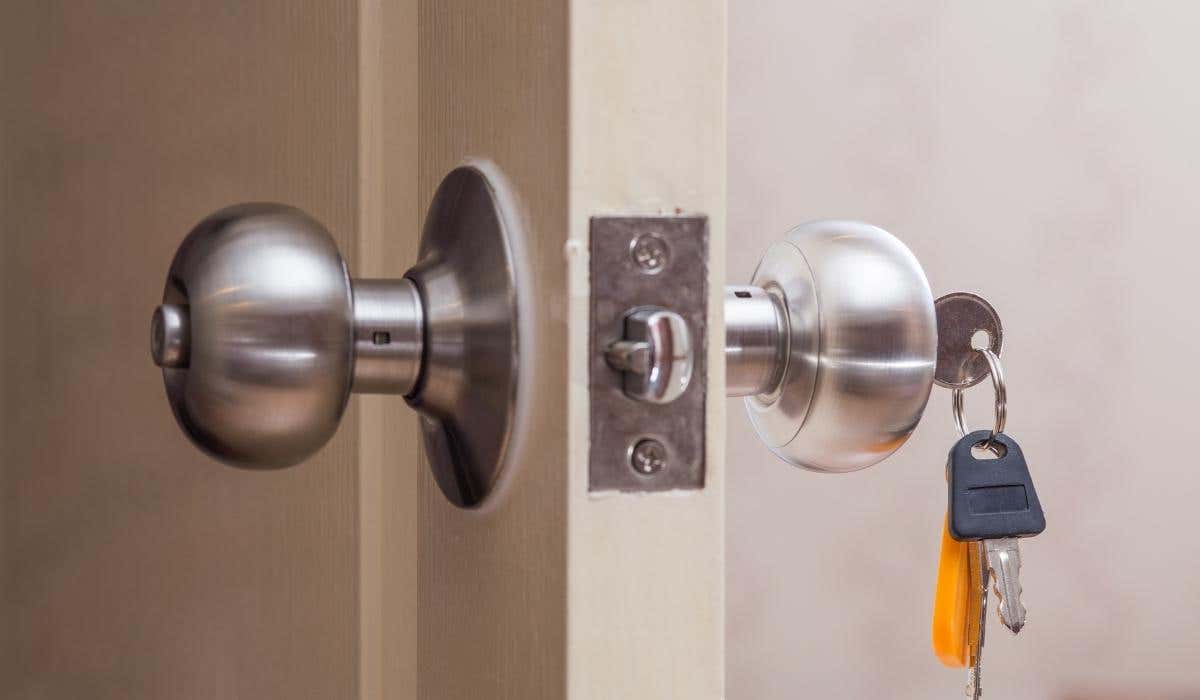
No, they can't, but this is a view that's not widely accepted - even in the trade! The truth is that 76 mm latches represent the smallest type that should be used for both sprung and unsprung door knobs.
The reality of the situation is that often 76 mm latches end up being too short for some types of door handles. This results in the doorknob being situated too near to the door frame and painful knuckles for the user.
As such, the minimum size of latch we'd recommend for use with a doorknob is 102 mm (4 inches). This will provide an 82 mm backset, leaving sufficient room for bashed fingers to be avoided. It also typically results in better aesthetics being offered overall.
IS THE HEIGHT OF THE DOOR LATCH INSTALLATION IMPORTANT?
Absolutely, as the positioning of the installation is another very important factor, as you'll find out if you get it wrong!
Again though, it matters whether you're installing a lever door handle or a door knob, as it will have a bearing on things.
For a lever door handle, your door latch will ideally be installed at a height of around 1 metre - so that it lines up perfectly with the strike plate.
However, when talking about door knobs, that's not always the case, as it depends on the door it's being installed in.
For example, if your door is a panelled one, the doorknob has to be situated on the mid-rail, regardless of how far that is from the floor.

AND WHAT'S THE RIGHT DOOR LATCH INSTALLATION HEIGHT FOR A NEW DOOR?
Should you not have existing holes to suggest a correct latch case size, then just follow UK regulations which state that the height needs to be between 900-1050 mm.
Also, if you're installing numerous door latches into numerous new doors, you'll want to select a uniform height for all of them, for aesthetic reasons.
GOOD LUCK WITH YOUR DOOR LATCH INSTALLATION!
So, that concludes our guide on how to measure a door latch and we very much hope that it has proven helpful to your DIY efforts.
Here we've dealt with every major consideration required to ensure your installation is at the right height from the floor and distance from the frame of the door.
Follow our guidance as laid out here and there's no reason why you shouldn't get excellent aesthetic and functional results.
All that remains to be said is that we wish you the best of luck with your installation and we'll see you again next time.

